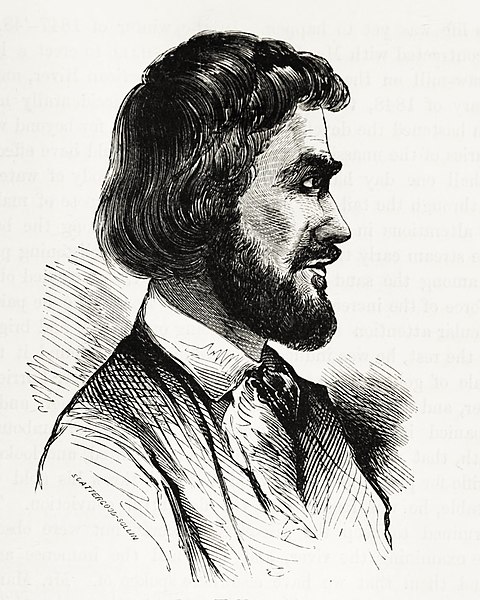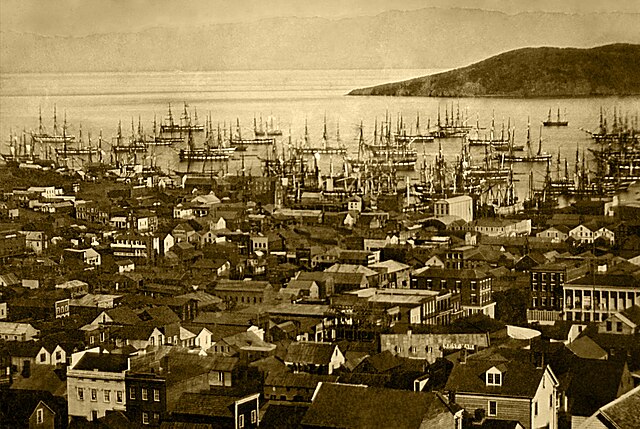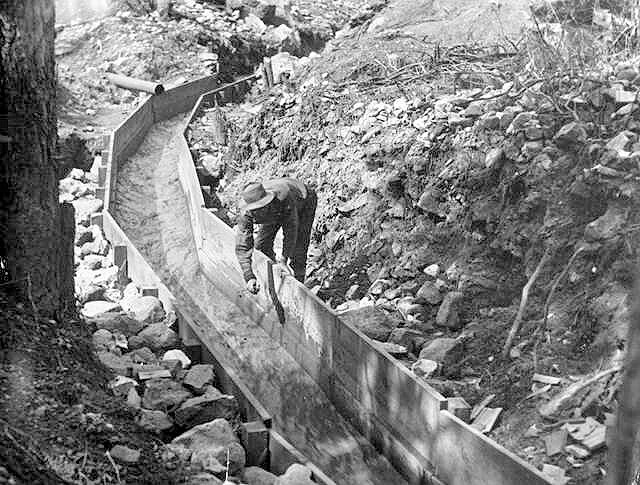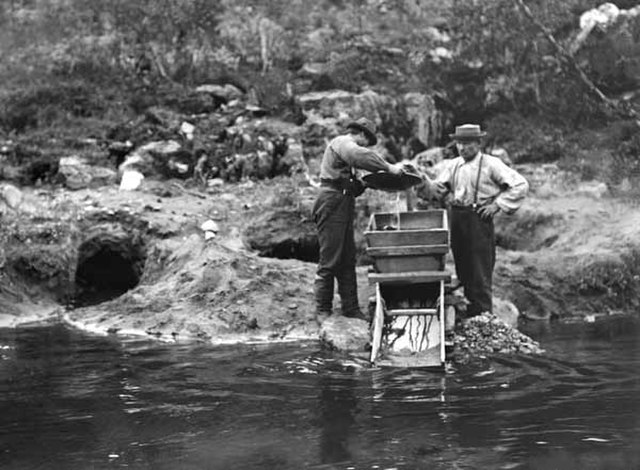The California gold rush (1848–1855) was a gold rush that began on January 24, 1848, when gold was found by James W. Marshall at Sutter's Mill in Coloma, California. The news of gold brought approximately 300,000 people to California from the rest of the United States and abroad. The sudden influx of gold into the money supply reinvigorated the American economy; the sudden population increase allowed California to go rapidly to statehood in the Compromise of 1850. The Gold Rush had severe effects on Native Californians and accelerated the Native American population's decline from disease, starvation, and the California genocide.
Prospectors working California gold placer deposits in 1850
1855 illustration of James W. Marshall, discoverer of gold at Sutter's Mill
Advertisement about sailing to California, c. 1850
Merchant ships fill San Francisco Bay, 1850–51
A gold rush or gold fever is a discovery of gold—sometimes accompanied by other precious metals and rare-earth minerals—that brings an onrush of miners seeking their fortune. Major gold rushes took place in the 19th century in Australia, Greece, New Zealand, Brazil, Chile, South Africa, the United States, and Canada while smaller gold rushes took place elsewhere.
The fastest clipper ships cut the travel time from New York to San Francisco from seven months to four months in the 1849 California Gold Rush.
A man leans over a wooden sluice. Rocks line the outside of the wood boards that create the sluice.
Swedish gold panners by the Blackfoot River, Montana in the 1860s
Gold prospecting at the Ivalo River in 1898







